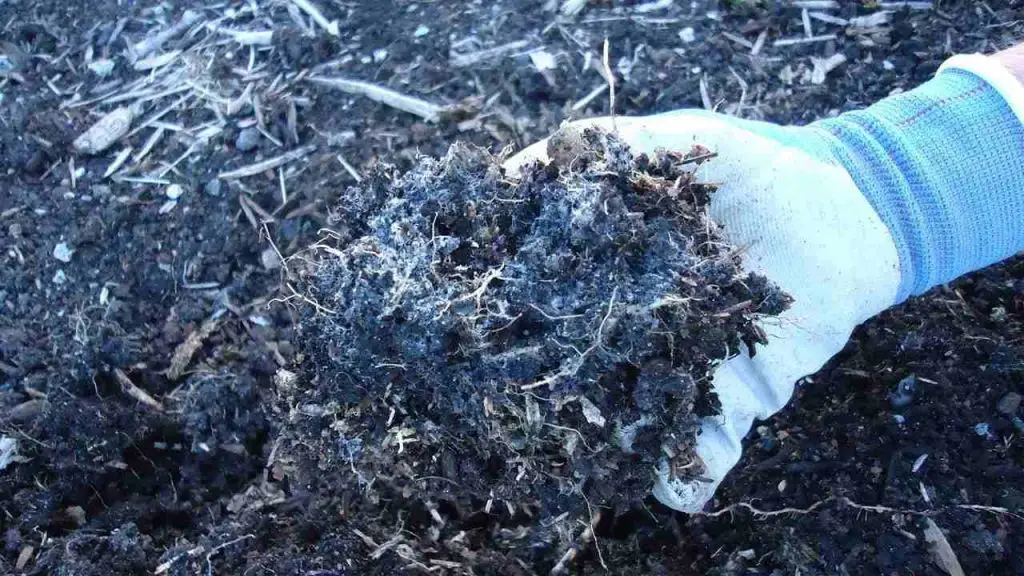White fungus in the soil can be a major problem for gardeners. The good news is that there are some things you can do to get rid of it and keep it from coming back.
In this blog post, we’ll discuss what white fungus is, what causes it, and how to get rid of white fungus in soil. We’ll also give you some tips on preventing white fungus in your garden. So read on to learn more!
What Is White Fungus In The Soil?

White fungus in the soil is a type of mold that can form on the surface of the soil or on plant leaves. The fungus is typically white or pale in color and has a velvety texture.
Although white fungus is often considered to be a cosmetic issue, it can actually cause problems for plants. The fungus can interfere with photosynthesis by blocking sunlight from reaching the leaves.
In addition, the fungus can prevent water and nutrients from being absorbed by the roots. As a result, plants infected with white fungus may experience stunted growth or die.
There are a number of ways to prevent or remove white fungus from the soil, including using fungicide products and increasing air circulation around the affected area.
What Are The Symptoms Of White Fungus In Soil?
White fungus in the soil can cause a variety of problems for plants, including yellowing and wilting of leaves, stunted growth, and death. The symptoms of white fungus vary depending on the type of plant affected, but there are some common signs to look for.
Wilting and yellowing leaves are often one of the first symptoms of white fungus, as the fungus interferes with the plant’s ability to take up water.
Stunted growth is another common symptom, as the fungus impedes the plant’s ability to access nutrients in the soil.
In severe cases, the white fungus can kill a plant outright. prevention is the best defense against white fungus, as it can be difficult to treat once it takes hold.
Keeping your garden clean and free of debris, watering deeply but infrequently, and using mulch can help to reduce the risk of white fungus infections.
How Did My Soil Get Infected With White Fungus?
White fungus is a type of mold that can grow on organic matter, such as leaves, grass, and Wood. It is often found in soil that is high in moisture and nutrients. White fungus is not harmful to humans or animals, but it can cause problems for plants.
White fungus is most likely to infect soil that has been disturbed, such as by construction activity or heavy rainfall. The best way to prevent white fungus from infecting your soil is to keep the area around your plants clean and free of debris.
If you do find white fungus growing on your plants, you can remove it with a garden hose or a stiff brush.
Drawbacks Of White Fungus In Soil
White fungus is a type of fungi that is commonly found in soil. While it can provide some benefits to plants, it can also cause problems.
One of the biggest drawbacks of white fungus is that it can make the soil harder for plants to absorb nutrients. The fungi compete with plants for nutrients, and can also release toxins that can damage roots.
In addition, the white fungus can make the soil more acidic, which can be harmful to some plants.
The white fungus can also reduce the amount of water that is available to plants. The fungi absorb water, making it less available for plant growth.
Finally, the white fungus can encourage the growth of other types of fungi, such as black mold. While white fungus does have some benefits, its drawbacks make it something that gardeners should be aware of.
How To Get Rid Of White Fungus In Soil?
If you notice white fungi growing in your soil, it’s important to take steps to get rid of them as soon as possible. White fungus is not only unsightly, but it can also damage your plants. Fortunately, there are a few simple things you can do to get rid of white fungus for good.
One of the best ways to get rid of white fungus is to improve drainage in your garden. White fungi thrive in damp conditions, so by improving drainage you will make your garden less hospitable for them. You can improve drainage by adding organic matter to your soil, such as compost or bark chips. You can also make sure that your gutters and downspouts are clear of debris so that they can carry water away from your home effectively.
Another way to get rid of white fungus is to improve air circulation in your garden. White fungi need still air to thrive, so by increasing air circulation, you will make your garden less hospitable for them. You can improve air circulation by pruning back trees and shrubs, and by removing dead leaves and debris from your garden bed. You can also invest in a portable fan to help circulate air in your garden on hot days.
By following these simple tips, you can get rid of white fungus in your soil for good.
Are There Any Solutions To Preventing White Fungus In The Soil?
White fungus is a common problem for gardeners, but there are a few things you can do to get rid of it and keep it from coming back.
First, water the soil deeply but less frequently. This will help to prevent the fungus from spreading through the top layer of soil.
Second, avoid getting the leaves of your plants wet, as this can provide a perfect breeding ground for the fungus.
Third, use well-draining soil to help reduce the chances of fungal growth.
Fourth, increase air circulation around your plants by spacing them out properly and not overcrowding them.
Fifth, don’t over-fertilize your plants, as this can lead to an imbalance in the soil that encourages fungal growth.
Sixth, disinfect your gardening tools after each use to prevent the spread of fungus spores.
Finally, practice crop rotation so that different plants are growing in the same spot each year.
By following these simple tips, you can get rid of white fungus in your soil and keep it from coming back.
Additional Contents


